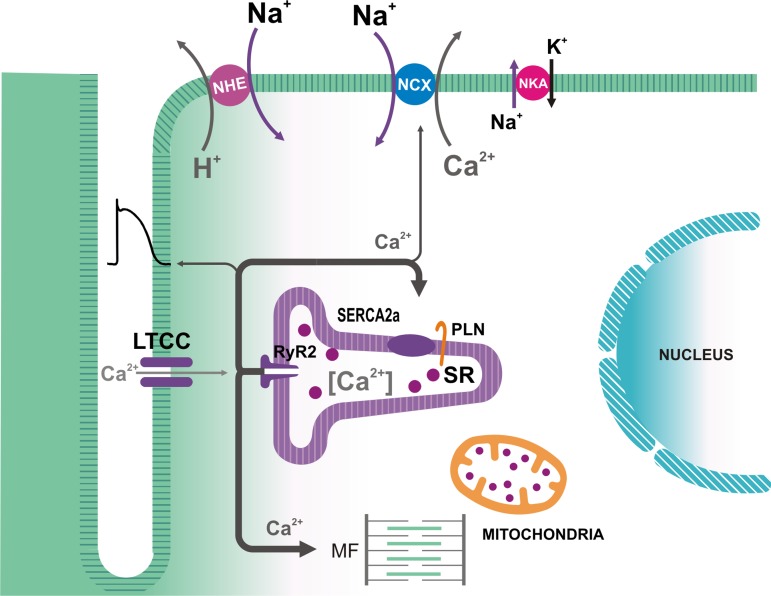Fig. 1.
Ca2+ fluxes associated with excitation-contraction coupling in mammalian cardiac myocytes. During the action potential, Ca2+ influx via L-type Ca2+ channels (LTCC) triggers Ca2+ release from the sarcoplasmic reticulum (SR) by Ca2+ binding to the ryanodine receptors (RyR2) in the SR membrane. In addition to interacting with the myofilaments (MF), Ca2+ is removed from the cytosol mainly by the SR Ca2+-ATPase (SERCA2a), which is regulated by phospholamban (PLN), and by the electrogenic sarcolemmal Na+/Ca2+ exchanger (NCX1), which is driven by the Na+ electrochemical gradient across the membrane. This gradient is maintained by the Na+-K+-ATPase (NKA). Intracellular [Na+] may also be affected by the operation of the Na+-H+ exchanger (NHE).

